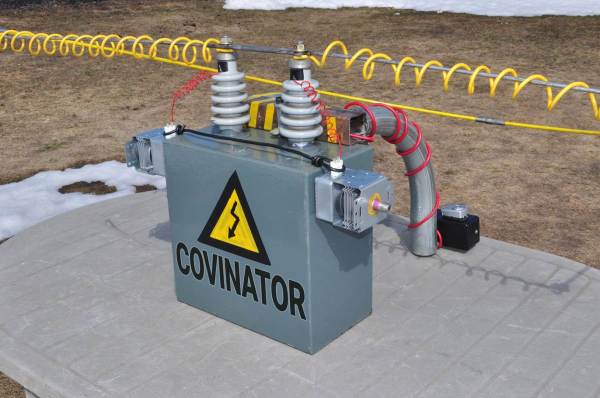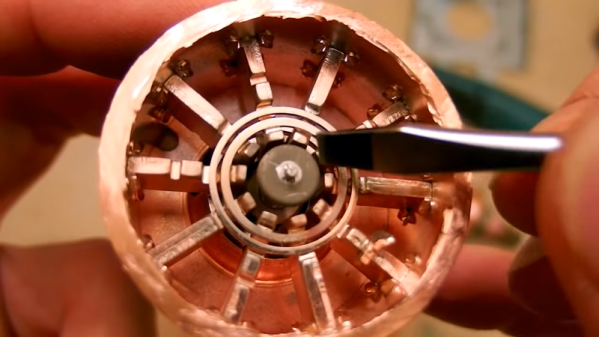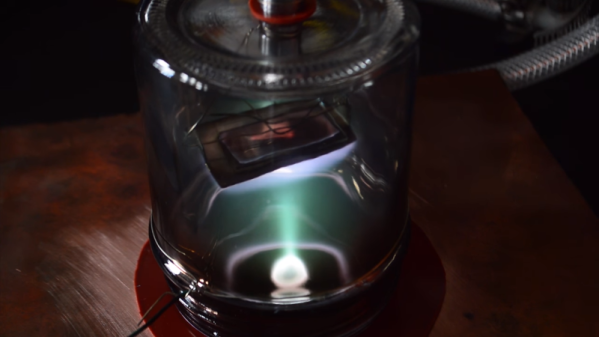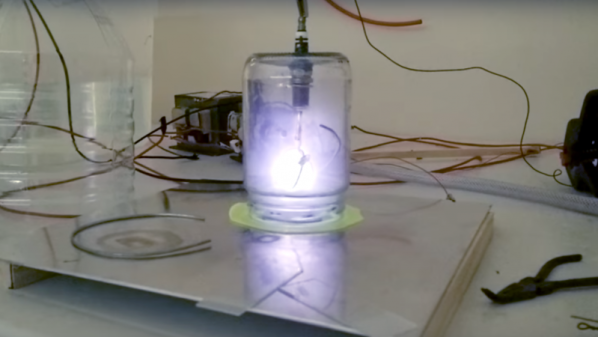When getting parts together for a one-off project, we often find ourselves with some leftovers on hand. Most of the time these things go in the junk drawer, but [Brad] aka [AtomicZombie] was working on a project which required parts salvaged from several microwave ovens. That left him with enough surplus components to build a social distancing enforcement tool for the modern age; which will deliver a taser-like shock to anyone which violates the new six-foot rule.
The leftover parts in question were built around a high-voltage capacitor, which [Brad] strapped to his back to hold all of the electronics needed for the six-foot electrified hoop. The generator utilizes the output voltage from two magnetrons, but doesn’t start until the operator enters a code on the front control panel, which is about the only safety device on this entire contraption. To get power to the magnetrons a 12 VDC car battery is used with an inverter to get the required input voltage, and towards the end of the video linked below he shows its effectiveness by setting various objects on fire with it.
While this gag project is unlikely to get any actual use, it’s not like any of us around here need an excuse to play with high voltages. [Brad] is also unlikely to need it either; he lives on a secluded 100-acre homestead and has been featured here for some of the projects he built to make his peaceful life a little easier, like a robotic laundry line, mobile chicken coop, and an electric utility tricycle built from an old truck and motorcycle.
Continue reading “Enforce Social Distancing With High Voltage”


















